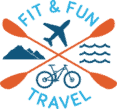Myofascial release is one of my favorite techniques for relieving tight muscles and connective tissue. If you’re unfamiliar with this stretching technique, you can read up on its benefits and how it works here. For those just wanting to know the bottom line, all you need to know is myofascial release is an easy to implement technique that helps correct muscle imbalances, ease inflammation and improve range of motion.
Those familiar with Tom Brady’s mobility work will be familiar with myofascial release. Unlike TB12 I don’t have a team of trainers to assist me with this, so I use a foam roller for self-myofascial release work. I always find that if I use my foam roller on a regular basis I experience less muscle tightness. Of course, if I’ve been a bit lax with the foam roller, my left knee reminds me. I start to experience a little pain on the outside of that knee. After a couple sessions with my roller the pain miraculously disappears.
I have a 36 inch firm foam roller that I typically use at night when I’m unwinding and watching TV. But what about when traveling? I’m not going to pack that into a suitcase. I’m also not going to haul it to the gym. And you can forget about me using the large foam rollers at the gym. I’ve yet to see anyone wipe their sweat off the roller after using it. Fortunately, there are plenty of other options. In addition to a 12 inch foam roller, here are a few of the best portable myofascial release tools:
Table of Contents
Lacrosse Ball
I’m a big fan of the lacrosse ball, especially for the back, shoulders, glutes and feet. It’s inexpensive and highly portable, so it’s easy to pop in your bag. Lacrosse balls are quite hard, so take it easy if it’s your first time using one. You don’t want the lacrosse ball to make you even more sore.
I suggest placing the ball on your sore back muscle and leaning against a wall. With light pressure, move your back up and down and left and right to warm up the muscle. If there is a particularly sticky spot, stop moving and lean more weight into the wall and hold there for about 30 seconds. Finish by moving up and back and left and right again.
This technique is also good for the shoulders and glutes. The lacrosse ball is also great for the bottoms of your feet. You don’t realize how much stress and pressure you often put on your feet, especially if you’re a runner. I primarily cycle for my cardio work and I also experience tightness from putting constant pressure on the pedals. Rolling the lacrosse ball back and forth from heel to toe is a huge help. Those with plantar fasciitis will definitely find this technique helpful.
Tennis Ball
A tennis ball is also a good alternative to a large foam roller. It’s similar in size to a lacrosse ball and used in the same manner, but it is much softer, so it’s a good option for beginners. Tennis balls are much lighter than lacrosse balls, so this also a good option for those looking to pack lightly.
Muscle Rolling Stick
A handheld muscle rolling stick is another favorite portable tool for myofascial release. It’s fairly lightweight and fits easily in a gym bag or carry on bag. The rolling stick is great for warming up your muscles before a workout, working through a knot and helping to soothe and stretch muscles after a tough workout.
TENS Unit
Electrical stimulation (e-stim) is different from myofascial release therapy, but I think they complement each other and both can be used to target soft tissue.I was first exposed to e-stim for muscle relief at my chiropractor’s office. I must have overdone a workout and woke up with the stiffest neck of my life. My neck and upper back were one big knot. In addition to giving me an adjustment, the chiropractor set me up with her e-stim unit for about twenty minutes. This was super useful in helping to break up my knots, though I did have to go back for several more treatments because I really did a number on myself!
Fortunately, I now have an e-stim unit of my own. It’s a handheld TENS unit that’s small enough to pack in a carry on bag. TENS stands for Transcutaneous Electrical Nerve Stimulation, and the therapy uses low voltage electrical stimulation to provide pain relief. The unit comes with four small pads that can be placed anywhere you need, so you can target your pain points and knots. I typically use mine on my back and neck to keep my knots from getting out of control.
(Note: Consult your doctor before using a TENS unit if you have any medical conditions.)
Recommended Tools
If you want to buy any of the above mentioned myofascial release and electrical stimulation tools,

